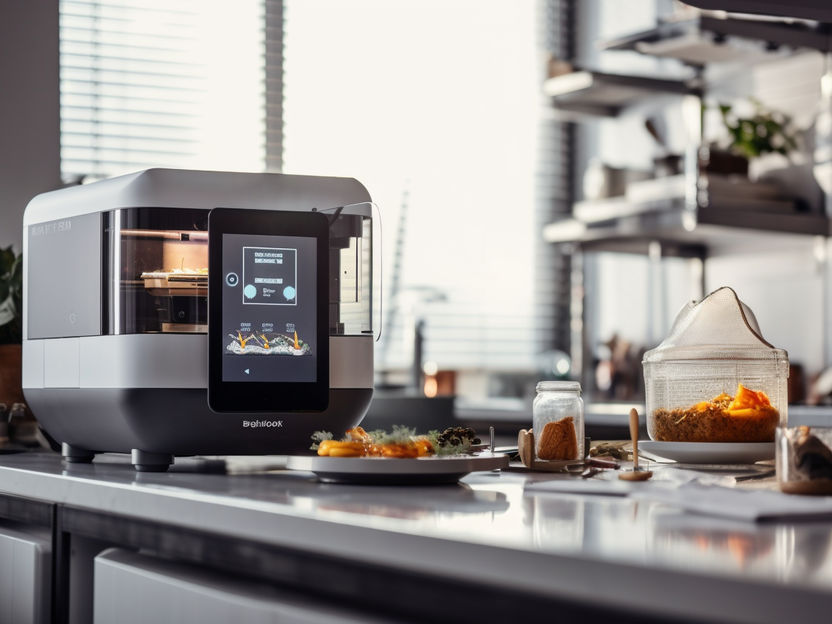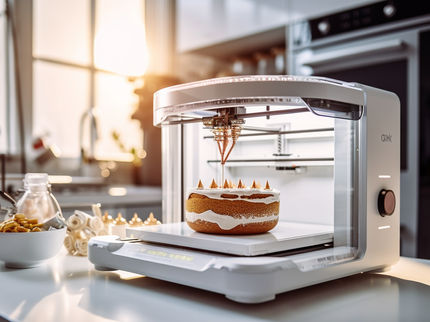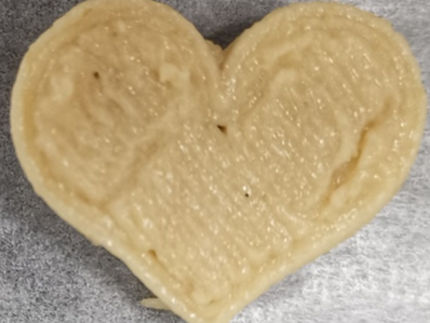A recipe for 3D-printing food
Researchers identify factors affecting the quality of edible materials produced by additive manufacturing.
3D-printing food could address global challenges in food supply and nutrition. But there are hurdles involved in adapting additive manufacturing to produce edible materials.

symbolic picture
computer generated picture
In Physics of Fluids, from AIP Publishing, University of Ottawa researchers Ezgi Pulatsu and Chibuike Udenigwe identify a range of factors that affect the print quality and shape complexity of food created with additive manufacturing. Accounting for these features can increase food quality, improve control, and speed up printing.
Additive manufacturing of food involves designing (3D shapes and their geometric codes), pre-processing (food ink preparation), manufacturing (deposition of layers to create shapes), and post-processing (baking, boiling, cooking, freezing, frying, or drying). Each step is an opportunity to create innovative foods.
Changing the printing patterns and ingredients of the initial mix or paste can affect the food’s matrix and microstructures and therefore its texture.
The flow of that mix in additive manufacturing is also crucial and is sometimes encouraged or discouraged by controlling ingredients and process conditions.
“Extrusion-based 3D printing is the most applicable technique for food,” said Pulatsu. “It involves a syringe loaded with a food paste – such as puree, dough, or frosting – being forced out of a nozzle by direct (pushing the plunger) or indirect force (compressed air).”
Creating a stable continuous flow is the first step to successful printing, so designed shapes can be produced by layering stringlike material in a controlled way.
“Once a layer is deposited, we no longer want it to flow; otherwise, it will destroy the shape we created,” said Pulatsu.
Post-processing – through baking, boiling, cooking, freezing, frying, or drying – physically and chemically transforms the food’s micro- and macromolecules and leads to various textures and tastes. At the same time, the shape should be conserved or carefully controlled.
“We also have other mechanisms of creating food structures via different 3D-printing techniques,” Pulatsu said. “For example, material jetting uses liquid binders deposited on powder to form self-supporting layers, and liquid inks that harden after deposition can also be used.”
One way to make additive manufacturing more efficient for the food industry is by establishing a printing path (a series of computer-controlled movements), which is often skipped for food applications.
“Future studies should explore the cost efficiency of different technologies in terms of build time, where shape complexity and toolpath strategies – which involve the printing path, moving head speed, and nonprinting movements – are also considered,” said Pulatsu. “Food is essential to living, and it’s becoming more critical due to the increasing global population and environmental changes. Therefore, novel foods and matrices should be designed in consultation with chefs, food scientists, and engineers, and in line with current needs.”
Original publication
Other news from the department science

Get the food & beverage industry in your inbox
By submitting this form you agree that LUMITOS AG will send you the newsletter(s) selected above by email. Your data will not be passed on to third parties. Your data will be stored and processed in accordance with our data protection regulations. LUMITOS may contact you by email for the purpose of advertising or market and opinion surveys. You can revoke your consent at any time without giving reasons to LUMITOS AG, Ernst-Augustin-Str. 2, 12489 Berlin, Germany or by e-mail at revoke@lumitos.com with effect for the future. In addition, each email contains a link to unsubscribe from the corresponding newsletter.




























































